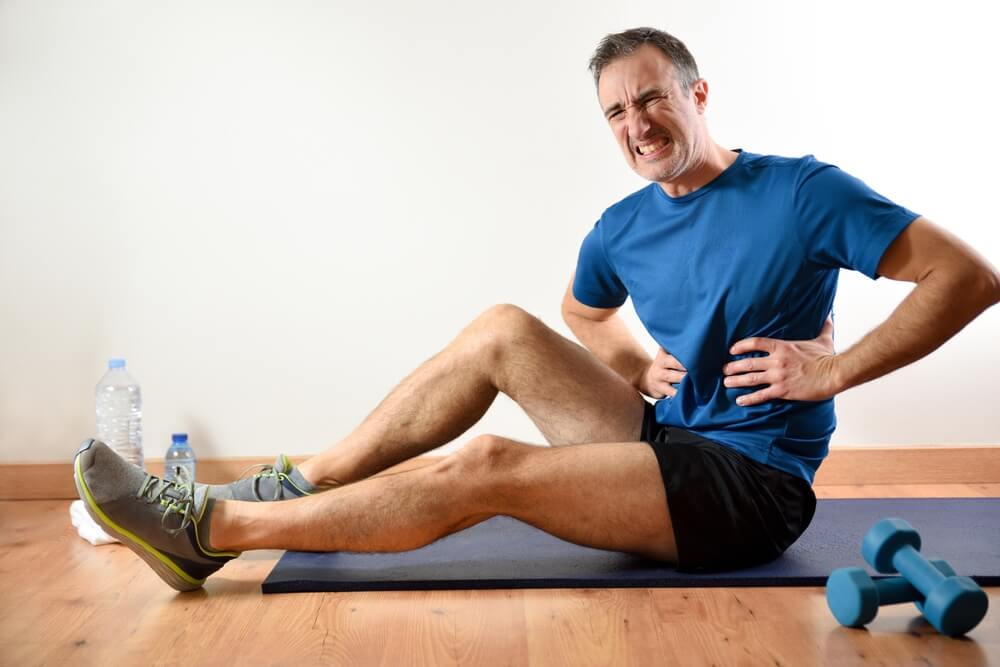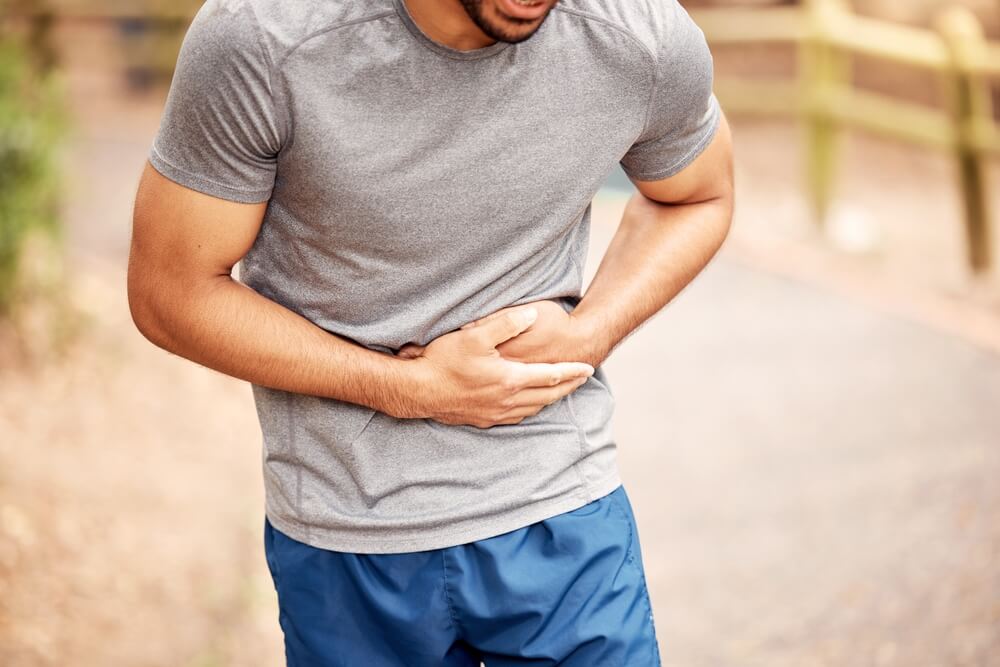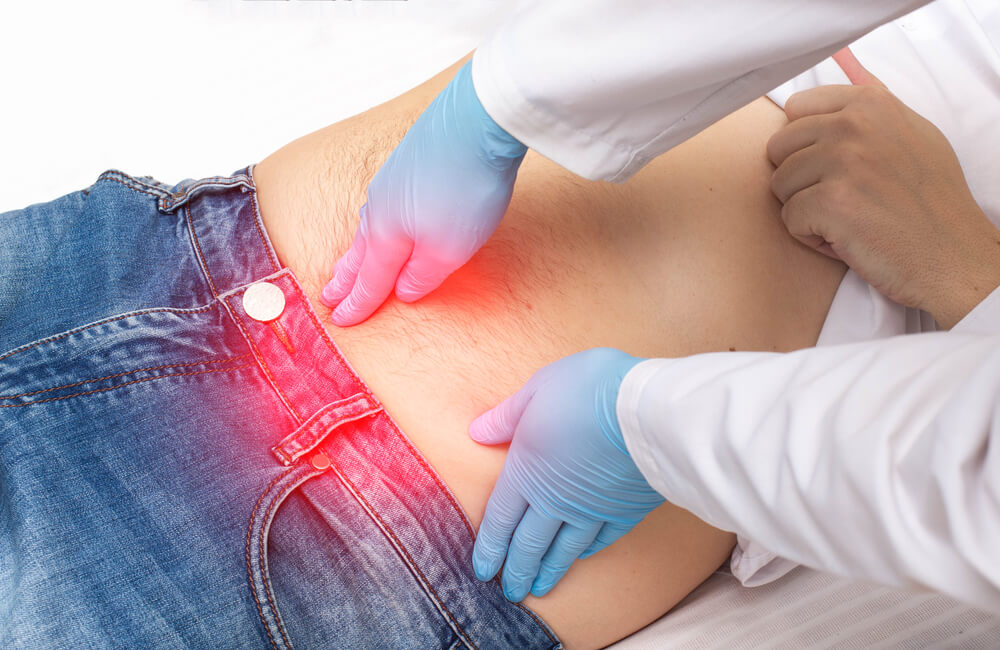Before getting into hernia exercises, we must first discuss what hernias are. These are muscle or tissue weaknesses, mostly in the abdominal area, allowing organs and other internal body parts to get through. Usually, they develop between the hips and the chest, causing only a few symptoms, but sometimes, they may cause evident signs, like lumps and swellings in the groin or abdominal area.
In this article, Dr. Omar Rashid and his expert team discuss hernia exercises, talk about the exercises to prevent hernia and give out general tips for exercising with a hernia.
Hernia Types
Some experts differentiate between three common hernia types:
- Hiatal Hernias: These happen when excess tossie from the stomach gets through the diaphragm, causing a hernia in the chest area. These are usually associated with smoking, gastroesophageal reflux disease, and acid reflux.
- Umbilical Hernia: These develop when a section of the intestines manages to get through the abdominal cavity around the belly button. Pregnant women and infants are generally more likely to experience umbilical hernias, but it also often develops in adult men.
- Inguinal Hernias: These are a result of the bowel or bladder pushing through the abdomen’s lower wall.
Exercising with A Hernia: Is it Safe?

Exercising with a hernia can be safe in some cases, but it’s essential to exercise caution. To prevent added strain on the herniated area, it’s advisable to focus on activities that won’t stress it further. It is not recommended to engage in exercises or lifting routines that place undue pressure on the abdominal region if you have an abdominal hernia. Moreover, there are specific exercises that should be avoided altogether. Ensuring a safe workout regimen begins with understanding which exercises to steer clear of.
Furthermore, it’s a wise choice to exercise under the guidance of a qualified personal trainer or a certified physiotherapist. They can provide you with exercises that are safe and suitable for your condition. It’s essential to consult your doctor before embarking on an exercise routine if you’ve been diagnosed with a hernia or are recovering from hernia surgery. Your doctor can provide personalized guidance based on your specific situation.
Exercises for Hernia
Some scientific evidence suggests that yoga and certain exercises may help the healing process after undergoing hernia repair. Still, it’s essential to understand the most effective (and safest) hernia exercises.
What Are The Benefits of Hernia Exercises?
- Strengthening your core: Hernias are often the result of weak core muscles. Hernia exercises that strengthen the walls of the abdomen can address weaknesses. Still, direct core work should be avoided right after surgery.
- Faster surgery recovery: Studies suggest that yoga post-surgery may reduce pain and may be among the best exercises to prevent hernia.
- Activating more of the muscle: Different movements and stretches in yoga can target even the tiny muscle fibers and may actually improve the strength of the myofascial connective tissue that keeps most of the organs in place.
- Better body awareness: connecting movement and breathing helps people become more aware of their body and the areas where they may feel pain. Not to mention regular exercise can also help alleviate anxiety and stress.
The Best Exercises for Hernia By Type
Inguinal Hernia Exercises
Pillow Squeeze
This hernia exercise should engage the thigh muscles. Start by lying flat on the floor, bending your knees. Inhaling deeply, hold a pillow between your knees. Upon exhaling, gently squeeze the pillow with both knees. It is recommended to repeat this exercise 20 times daily to benefit from its effects.
Hamstring Muscle Stretch
While lying on the floor flat, bend your knees. Your chin and head should be approximately at the same level; then, while keeping one leg bent, raise the other up. You can also use a towel that’s wrapped around your foot, and you can pull the lifted leg toward you. Hold this position for half a minute while trying to stretch your hamstring muscles. Do this exercise with each leg ten times daily for the best results.
Shoulder Bridge
While maintaining the position of your knees, exhale as you sit with a pillow positioned between them. Elevate your waist and use your arms to provide support by resting them on the floor. Aim to maintain a straight posture from your shoulders to your knees. Inhale deeply, expanding your lungs as much as possible. Sit while keeping the pillow between your knees, then return to the initial position. It’s recommended to perform this sequence 20 times daily.
Umbilical Hernia Exercises
Air Cycling
Just lay on a slant board and cycle with your legs in the air. Just lift your legs closer to your chest and stabilize yourself while pedaling with your legs. Ensure to perform at least three sessions a week of air cycling for ten to 15 minutes.
Breathing Correction
While performing any exercise, take deep breaths from the abdomen to decrease abdominal pressure. To focus on correct breathing, lay your back on the ground and put one hand on your chest while the other is on your belly. Let the air enter your abdomen while breathing through your nose.
Stretching
Proper stretching makes the abdomen more flexible, so stretches also double as exercises to prevent hernias. Lie flat with bent knees. While keeping your back on the ground, bend your legs to each side, aiming to touch the surface. Maintain this position for five to ten seconds, then return to the starting point. Repeat on the other side. This daily stretch enhances abdominal muscle flexibility, reducing the risk of weakening under pressure.
Hiatal Hernia Exercises
Diaphragmatic breathing
While sitting or lying, place one hand on your chest and the other on the stomach. Breathe through your nose, and focus on your rising stomach. Focus on how your stomach lowers as you breathe out your lips. Repeat.
Chair Pose
Strengthen the lower body and core by standing with feet together, hands overhead, and knees pressed together. Bend the knees to keep the thighs parallel to the floor, then return to the start.
Bridge Pose
Boost abdominal muscles by lying on your back with bent knees and feet flat on the floor. Lift the lower back off the floor, keeping shoulders down, and hold before returning to the start.
Exercises and Sit-Ups After Hernia Surgery
Are sit-ups after hernia surgery a good idea? Consider the following abdominal exercises after a hernia repair:
Button Pulls
Lying on your back with knees bent and hands on hips, draw your belly button in while inhaling, then exhale slowly. Repeat.
Core Twists
Lie on your back with bent knees and hands by your sides for stability. Keep your feet on the bed, then twist your bent knees as far as comfortable to one side before returning. Repeat on the other side.
Pelvic Tilts
Place your hands under your lower back, knees bent (feet on the surface). Flatten your spine against your hands and tilt your pelvis forward. After a few seconds, return to the start.
Walking
On the other hand, walking after surgery is also highly recommended as it speeds up recovery. Patients encourage better gut work and circulation. Gradually increase the distance to speed up recovery and prevent blood clots and infection.
Leg Exercises
Knee pushes, leg straightening, and ankle flexes help keep the legs mobile, also preventing blood clot formation and improving circulation.
Hernia Exercises to Avoid After Hernia Repair

The following exercises should be laid off for a while after hernia surgery:
- Sit-ups, planks, pilates, and other core exercises
- Contact and high-impact physician activities
- Avoid stretching the abdomen too much
- Avoid weightlifting and other forms of strenuous exercise.
Learn More About Hernia Exercises
If you want to hear more about preventing hernias or hernia repair surgery, feel free to reach out to us and schedule an appointment today.


